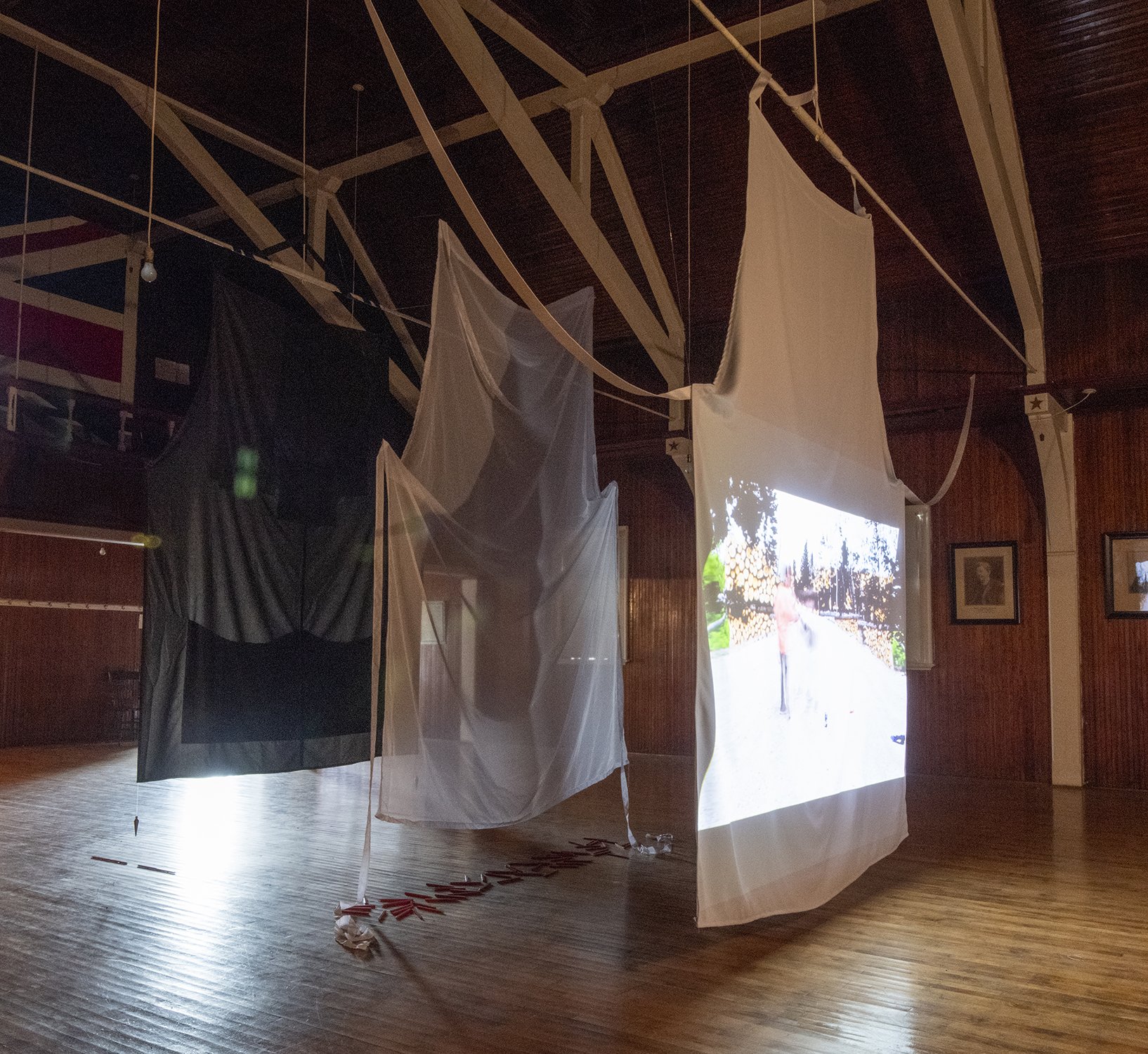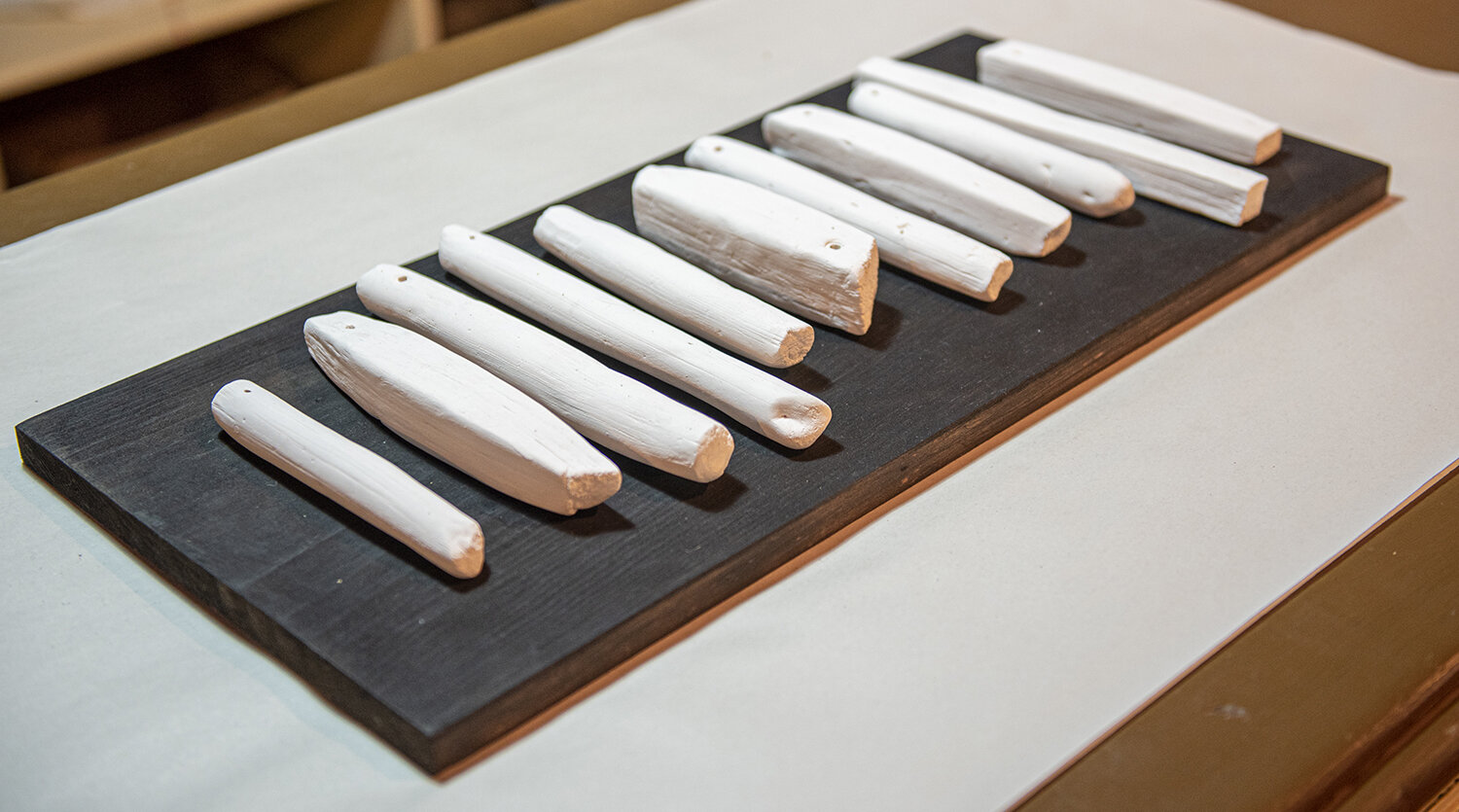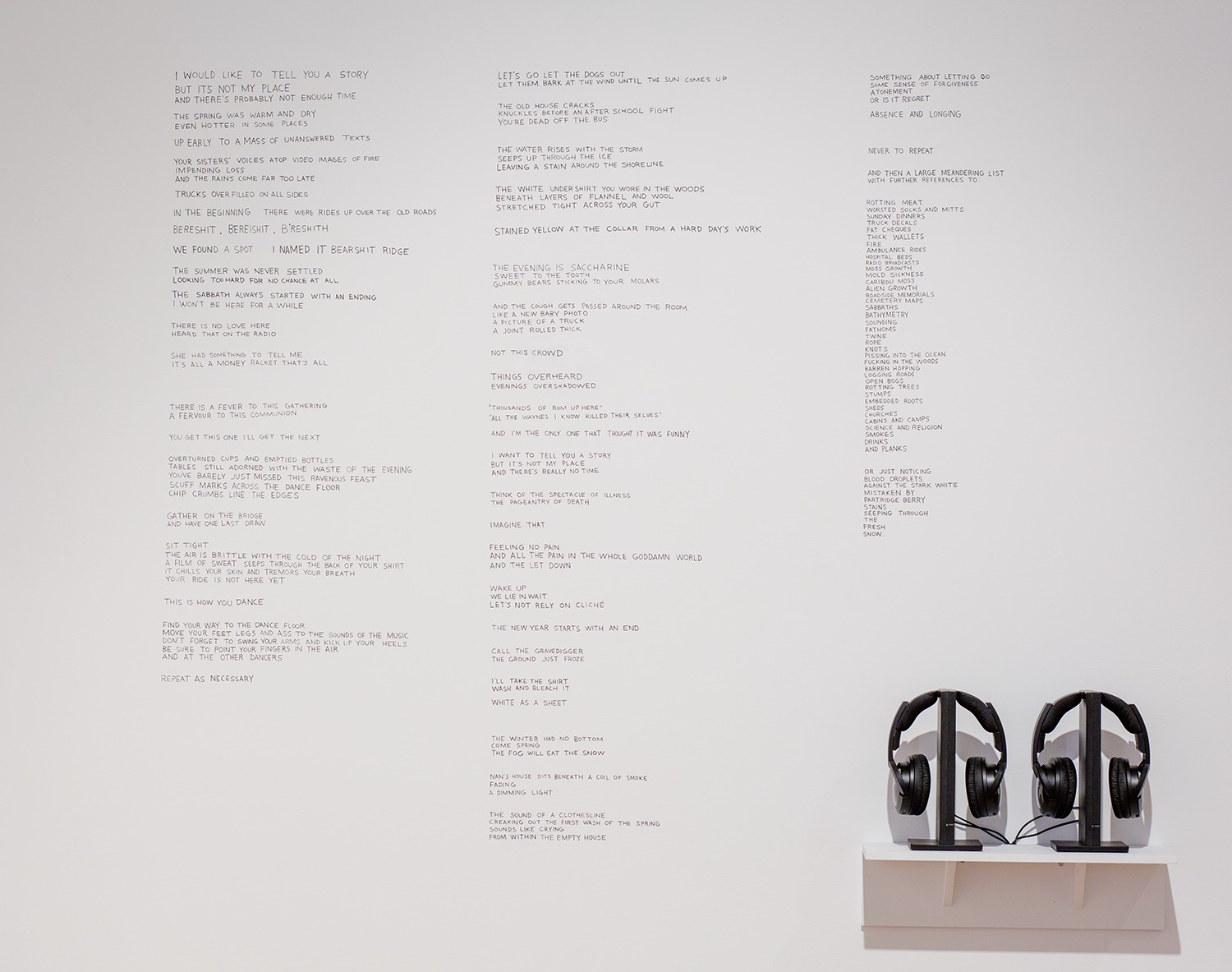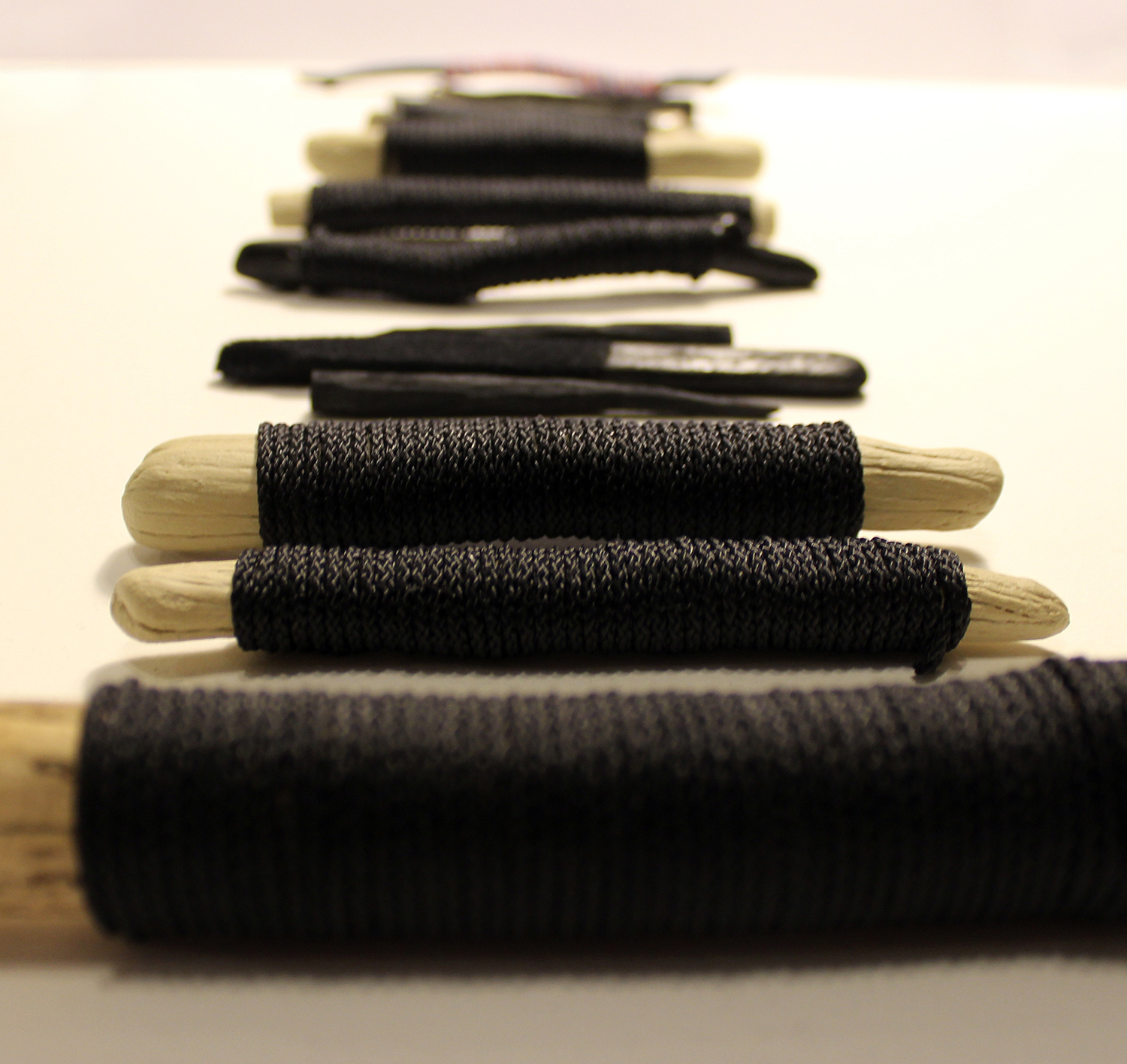blood ledger (preface for a liturgy)
BONAVISTA BIENNALE 2021
BONAVISTA, NL
∞
“In the summer of 2018 while collecting bits of busted up fishing gear on the beach in Knights Cove, a small scrap of orange fabric was found intertwined with kelp. once disentangled it revealed itself as a strange mask-like form, a face obscured. two tiny menacing eyes, no mouth to speak of. hooded, hidden, cloaked in disguise. it conjured images of lodges, meetings and rituals, clandestine gatherings, and other secrets not to be spoken of…”
Three large work aprons, more than 15 feet high, hang from the ceiling of the Loyal Orange Lodge #4 hall. Built in 1907, it is one of the largest of its kind in North America. It was here in 1912 that Sir William Coaker, leader of the Fishermen’s Protective Union, launched a manifesto known as the “Bonavista Platform” with the slogan of “To each their own.” As a historic space of gendered gathering, organizing and collective political action—now inactive—the lodge has a profound socio-political significance in the history of Ktaqmkuk (Newfoundland). It is a site deeply loaded with symbolic and actual meaning, and a building iconically associated with the Town of Bonavista. For his site-responsive installation Preface for a Liturgy (Blood Ledger), Jerry Ropson floods the large ceremonial chamber on the second floor with disconcertingly loud audio of a disembodied male voice and a vibrating score. From the pulpit, a video is projected onto the white apron. Fragmented and layered, the video has the feel of lost or recovered footage. Potently awkward, it meets this space of unease—of languished male violence and power—unflinchingly. Combining video Ropson shot on the Bonavista Peninsula in 2018 (while in residence at 2 Rooms Contemporary Art Projects), rawer experimental film he shot in the late ’90s, and semi-scripted performance with child friends in the spring of 2021, Preface for a Liturgy (Blood Ledger) weaves concern and prompts for labour with meditations on the clandestine activities, colonial “secrets” and unspoken truths of the space specifically, and our province generally.
Raised in Pollards Point, a resettled Ktaqmkuk (Newfoundland) outport community, Ropson is deeply interested in the politics of rural demise, ritual and the occult. One of the most important Newfoundland artists of his generation, Ropson offers a work that is profound in its urgency, a call to labour, an unsettling indictment of ”design”, disturbing blindfolded eyes and willfully deaf ears.
-MATTHEW HILLS
*This work was initiated through a residency with 2Rooms Contemporary Art, in Duntara, Ktaqmkuk, in 2018. It was made further possible through the support of the Bonavista Biennale, artsnb, The Walker-Buckler Family, and Mount Allison University.
Curatorial Direction: Matthew Hills
Community Liaison: Jane Walker
Performance: Ned & Miles Buckler
Voice: Jack Gunnar Symonds
Additional auditory and visual appearances: Logan MacDonald & Beaver Sheppard
Studio assistance and fabrication: Libbie Farrell
Technical support: Graeme Patterson
signs
FLOE: BONAVISTA BIENNALE 2019
BONAVISTA PENINSULA, NL
water at the bottom of the ocean, rocks upon the shore
FLOE: BONAVISTA BIENNALE 2019
William F. Coaker Heritage Foundation Museum
PORT UNION, NL
these base desires, these gratuitous emblems
these embellished gratuities, these false assumptions
held dear
a passive invocation, a name carved in a tree
a name set in brass or copper, raised to meet the fingertips
a plaque, affixed
upon a monument
this is not a celebration
nothing about this is celebratory or triumphant
this is not a commemoration
it is a cradle
disassembled and put back together with
extra parts strewn about the floor
of no obvious use
…
to kiss a goat between the horns
THE ROOMS
ST. JOHN'S, NEWFOUNDLAND. 2017
the distance between our outreached arms (deadflag)
FOFA GALLERY - York Vitrines
MONTREAL, QUEBEC. 2017
“With origins deep-rooted in nautical history and warfare, flags stand as an uneasy remnant of colonial history. Flags and the act of flagging have been a common motif in Jerry Ropson’s work for many years. Intrigued by cultural and material appropriations of the flag, the artist is interested in the ability of flags to communicate allegiances, to signify place, and affirm ideologies. In subverting its use, Ropson aims to incite an iconoclastic representation of the flag.
With FOFA Gallery, Ropson integrated a distinct site-specific work within the York Corridor Vitrines.
Using adhesive sign vinyl, paper, ink and twine, the artist will work in the space over several days, while maintaining an open dialogue with the public. On-site fabrications will be supplemented by drawing, canvas flags, felt banners, sculptural elements, and found materials. From this site, a series of actions, images, and communications will be “transmitted” to the viewing public. The work will act as a beacon—a meeting place, a workspace, and a passageway—a collective monument to lost tradition. This work emphasizes ideas of community, congregation, and cultural drift. The project utilizes processes of installation, performance, storytelling, and drawing.”


















































































































































































































































